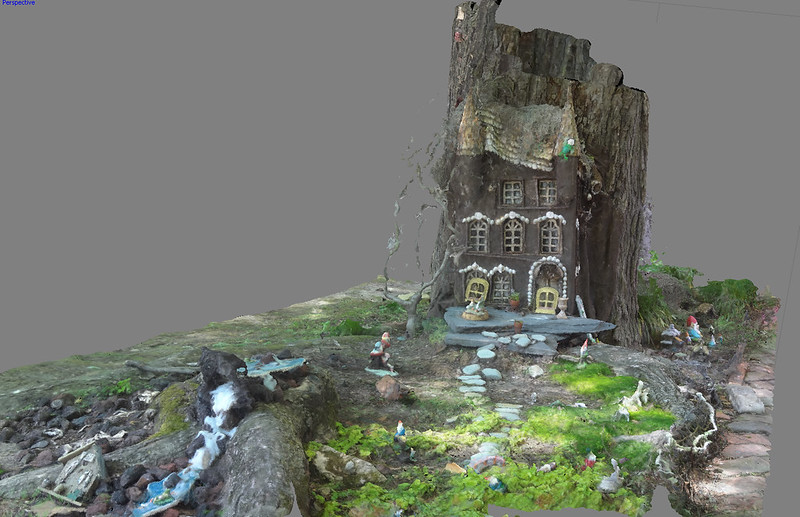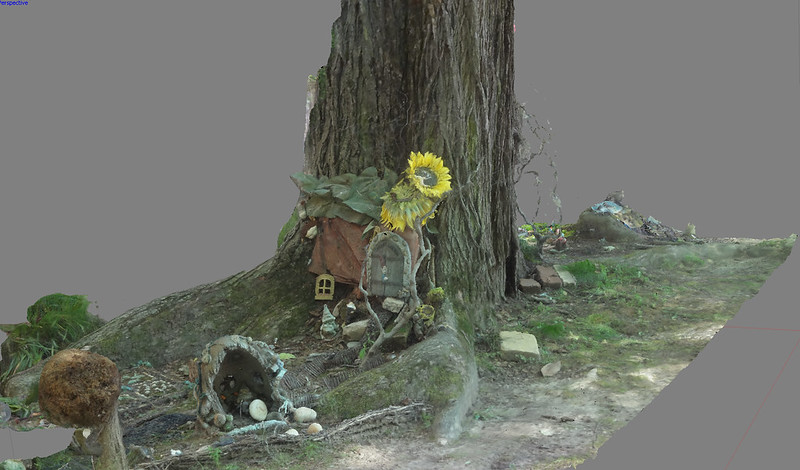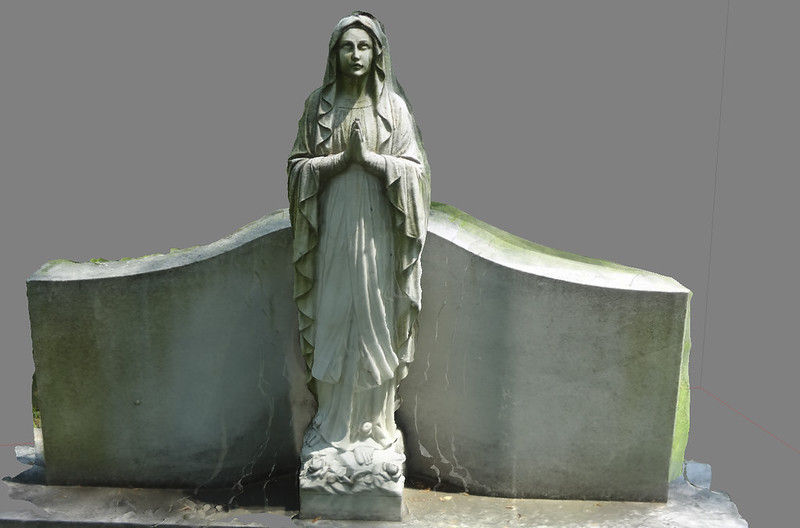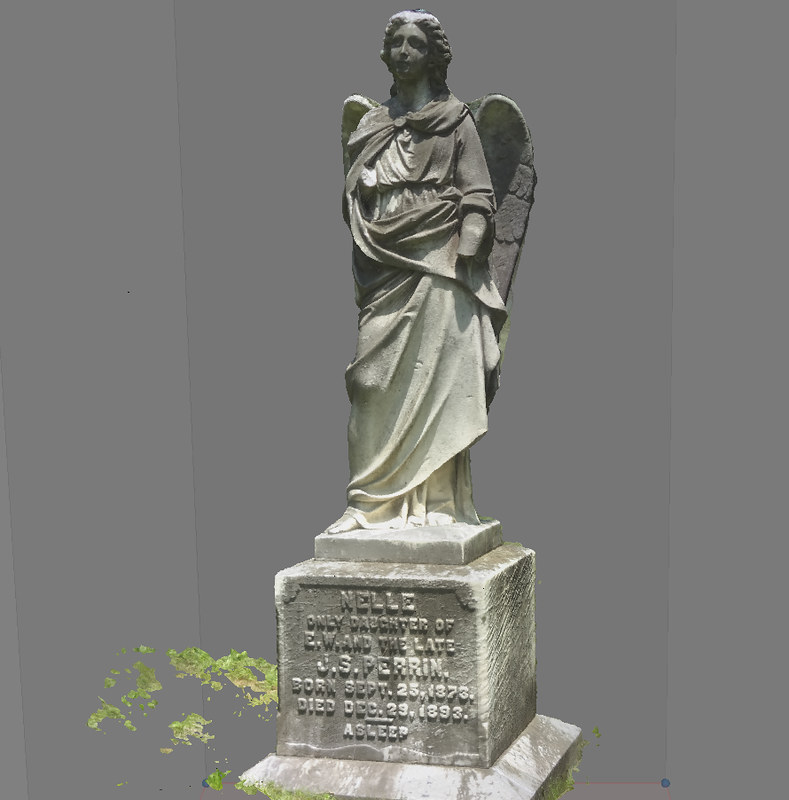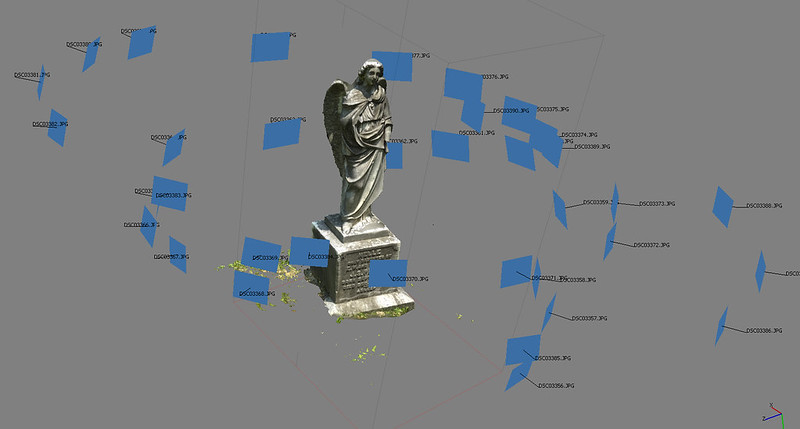Monday, July 21, 2014
Tuesday, July 15, 2014
Photo Scanning and Photogrammetry
A long time ago I took a class with Tim Dobbert in college on "image modeling", or "photogrammetry." Back then we used RealViz Image Modeler, which has since been bought by Autodesk.
This technology has come a long way and has become a key part of my workflow lately.
Here are some examples of scans I have done in the last few weeks:
Here are a couple of quick cemetary statues. The blue rectangles represent the photos which generate the model. You can see that, although more photos are preferred, it is possible to get a decent scan with just a few photos. Some people are even using IPhone cameras to get pretty good scans.
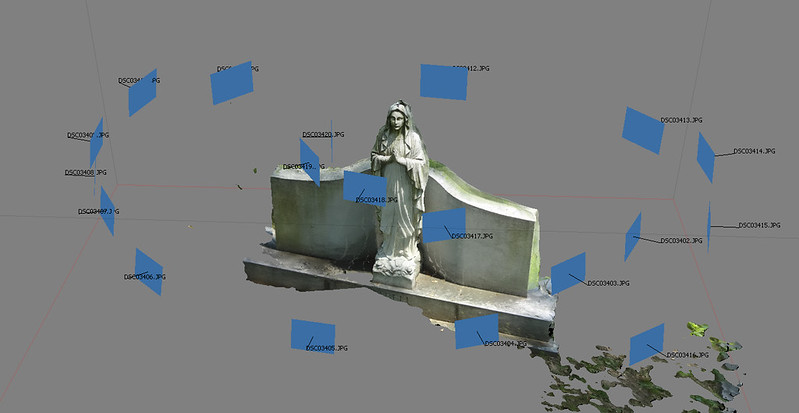
This technology has come a long way and has become a key part of my workflow lately.
Here are some examples of scans I have done in the last few weeks:
Here are a couple of quick cemetary statues. The blue rectangles represent the photos which generate the model. You can see that, although more photos are preferred, it is possible to get a decent scan with just a few photos. Some people are even using IPhone cameras to get pretty good scans.

Tuesday, July 8, 2014
Craola Seminar
Craola Painting Seminar Notes
Craola's Blogspot
Prep and Block in
* For larger pieces, use wood backing / wall.
* With larger pieces, layering enamel paint over acrylic might crack with the flexing of canvas.
* Use only acrylic base. Start with a series of gray values, covering a larger area with spray cans.
* Recommends "Alien Tips" / 94s
* Always start with midtones, for more flexibility.
* Photoshop mockup for composition and color is very useful.
Colors Used
* Paynes Gray (shading)
* Transparent Indian Yellow (yellow tinting) Nova Color 175
* Burnt Umber
* Misc. other colors (making sure to water down / create wash when appropriate)
Galleries and Pricing
* Gallery typically takes up to 50% of whatever is sold
* Additional 5% markup on work for each consecutive show
* Curator will handle all pricing and selling
Technique
One can use a mechanical pencil over initial gesso layer. Using transparent or translucent paint will allow one to see underlying drawing. Alternatively, reproject drawing / photoshop comp over painting using projector.
Do NOT use prismacolor pencils due to wax lines / residue.
After blocking in major forms with spray paint let dry (use hair dryer to speed up process) and then spray a very light coat of water. Let that dry. Next brush clear acrylic layer over top to seal underpainting. To cover large areas use foam "brush".
Begin painting in details, making sure to keep a dry brush handy ALWAYS. Craola will paint sometimes with two brushes in hand. One wet with paint and one always dry for blending. Dry brush blending is key. Apply paint with one hand and blend with dry brush in the other hand.
Always work back to front (background to foreground) and work large to small (3 inch brush / or house painting brush to start).
Burnt umber is often used for shading. (Almost) Pure black is used to "cut" around object, producing negative space.
1. block in opaque color for basic forms
2. push in shadows / pop out highlights
3. apply wash
4. repeat
For skin color:
1. blue / green base
2. yellow / orange mids
3. reds / pinks
Never mix color on palette, only on canvas.
Don't use markers. Especially alchohol based markers. Any alchohol based markers added WILL fade over time, changing the colors of the painting.
Uses dagger / triangular brush for detailing / fur.
Uses the company Static Medium to shoot photos of paintings.
http://www.staticmedium.com/process/
Recommends Todd Schorr DVD for acrylic painting.
http://www.yourepeat.com/watch/?v=8l4CtDin800
Craola's style is called "pop surrealism" and falls in the same catergory as Todd Schorr and Mark Ryden.
Below is an timelapse of the painting Craola made at the painting seminar.
33Third Los Angeles
5111 West Pico Blvd.
Los Angeles, CA 90019
Craola's Blogspot
Prep and Block in
* For larger pieces, use wood backing / wall.
* With larger pieces, layering enamel paint over acrylic might crack with the flexing of canvas.
* Use only acrylic base. Start with a series of gray values, covering a larger area with spray cans.
* Recommends "Alien Tips" / 94s
* Always start with midtones, for more flexibility.
* Photoshop mockup for composition and color is very useful.
Colors Used
* Paynes Gray (shading)
* Transparent Indian Yellow (yellow tinting) Nova Color 175
* Burnt Umber
* Misc. other colors (making sure to water down / create wash when appropriate)
Galleries and Pricing
* Gallery typically takes up to 50% of whatever is sold
* Additional 5% markup on work for each consecutive show
* Curator will handle all pricing and selling
Technique
One can use a mechanical pencil over initial gesso layer. Using transparent or translucent paint will allow one to see underlying drawing. Alternatively, reproject drawing / photoshop comp over painting using projector.
Do NOT use prismacolor pencils due to wax lines / residue.
After blocking in major forms with spray paint let dry (use hair dryer to speed up process) and then spray a very light coat of water. Let that dry. Next brush clear acrylic layer over top to seal underpainting. To cover large areas use foam "brush".
Begin painting in details, making sure to keep a dry brush handy ALWAYS. Craola will paint sometimes with two brushes in hand. One wet with paint and one always dry for blending. Dry brush blending is key. Apply paint with one hand and blend with dry brush in the other hand.
Always work back to front (background to foreground) and work large to small (3 inch brush / or house painting brush to start).
Burnt umber is often used for shading. (Almost) Pure black is used to "cut" around object, producing negative space.
1. block in opaque color for basic forms
2. push in shadows / pop out highlights
3. apply wash
4. repeat
For skin color:
1. blue / green base
2. yellow / orange mids
3. reds / pinks
Never mix color on palette, only on canvas.
Don't use markers. Especially alchohol based markers. Any alchohol based markers added WILL fade over time, changing the colors of the painting.
Uses dagger / triangular brush for detailing / fur.
Uses the company Static Medium to shoot photos of paintings.
http://www.staticmedium.com/process/
Recommends Todd Schorr DVD for acrylic painting.
http://www.yourepeat.com/watch/?v=8l4CtDin800
Craola's style is called "pop surrealism" and falls in the same catergory as Todd Schorr and Mark Ryden.
Below is an timelapse of the painting Craola made at the painting seminar.
33Third Los Angeles
5111 West Pico Blvd.
Los Angeles, CA 90019
Subscribe to:
Comments (Atom)



